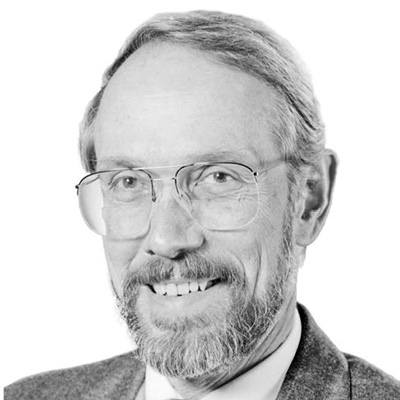Bio
BioGary Smith was the sixth director of APL, serving from 1992 to 1999.
Smith was a National Research Council postdoctoral research associate at the Naval Research Laboratory before joining APL in 1967. Soon, he was serving in management positions in APL’s Strategic Systems and Submarine Technology departments. In 1989, he became the Laboratory’s assistant director for research and exploratory development, and soon after, he was overseeing all Laboratory programs. He succeeded Carl Bostrom as director in 1992.
Despite the nation being on the cusp of the longest era of financial growth in U.S. history, the Lab faced fiscal challenges when Smith became director. It was a time of changing budgets and military priorities. However, Smith’s work with strategic cost-cutting and better alignment with sponsor goals made APL stronger.
Under his directorship, APL stood up new program areas—transportation and command, control, and communications—to expand APL’s funding base and retain critical staff while creating less costly solutions that helped sponsors improve their own bottom lines. APL developed training simulations to replace big-ticket exercises and war-gaming and evaluated alternative weapon systems to determine the best value and capability. Lab researchers appraised software effectiveness and proposed uncrewed undersea vehicles. To better serve the Naval Air Systems Command, APL opened the Patuxent River Field Office, putting Lab staff in daily contact with sponsor operations.
Smith also pursued separate contracts with the Department of Transportation, the intelligence community, the Army, and the Bureau of Engraving and Printing, and the Lab took on national challenges in biomedicine, information systems, and cyber warfare. In 1997, Smith led a major reorganization that set up the Power Projection Systems Department to more effectively address integrated strike and associated command and control system needs across all military services.
Smith’s final major initiative as director was a wide-ranging strategic planning effort that would inform the Laboratory into the next millennium. The 1998 Strategic Plan identified important 21st-century challenges that would be appropriate for APL to undertake. It also expanded the Lab’s sponsor base in areas such as infocentric warfare, information systems, and counterproliferation, all of which would later grow into major Laboratory program portfolios.
After leaving APL, Smith became the deputy director for science and technology at the Central Intelligence Agency.
Smith earned his bachelor’s, master’s, and doctoral degrees in physics from the University of California, Davis.
